Few writers navigate the layered complexities of childhood better than Stephen King. Never afraid to venture into the darkness, King’s bold willingness to explore youth from all angles is a beloved, recurring thread that runs throughout his prolific career. Therefore, when he recently tweeted about writer/director Eskil Vogt’s latest film THE INNOCENTS, calling it “sinister and completely absorbing,” the world took note. For a horror film about children to receive such public high praise from the master himself, that’s saying something.

Leaving the nostalgia-tinted glasses on the bedside table, THE INNOCENTS is an unusually sober look at one special group of Nordic children. After moving to a new apartment building, young Ida (Rakel Lenora Fløttum) and her nonverbal, neurodivergent sister Anna (Alva Brynsmo Ramstad) make friends with a couple of neighboring children. Soon, the group discovers that they have unique powers that seem to strengthen when in each other’s presence. Initially a source of joy and excitement, things quickly begin to spiral as the full range of their abilities and friends reveal themselves.
Offered without moral judgment, Vogt’s dark and chilling tale of developing identities required a score that was equally as bold in its presentation. Luckily, the production found the perfect sonic partner with Finnish composer Pessi Levanto. Extremely versatile in his skillset, Levanto’s background in classical, jazz, and rock provides him with a deep well of knowledge from which to pull inspiration. This, coupled with his willingness to experiment and push compositional boundaries has quickly cemented him as one of the most in-demand composers in Finland.
For THE INNOCENTS, Levanto took special care to not tread heavily over the tonal foundation laid out by Vogt. Beautifully juxtaposing hazy swirls of sound, reverberating percussion, and atonal textures with articulated, manipulated strings, Levanto’s music sonically mirrors the delicate story without treading upon it. Subtle and rich, the quiet complexity of the composition permeates each perfectly composed frame with reserved ease, injecting the film with wonder, weight, and fear. It’s an intricate partnership that few filmmakers strive for, but few truly achieve. In celebration of the film’s recent release on digital and VOD, I sat down virtually with Levanto for an in-depth chat. Truly a fascinating conversation, it’s a long one, sure. But I promise you, it’s a journey well worth taking.
Daily Grindhouse: How did you first get involved with THE INNOCENTS?
Pessi Levanto: This film is a collaborative project between several Nordic countries. Four countries in total which is a pretty common thing these days. In Europe, films are mostly publicly funded and there’s very little private money actually involved. So if several production companies put things together, and they decide to collaborate, they can raise money from those respective countries to up the overall budget. These have become really common in recent years and this is a good example of that.
The main production company is Norweigan and called Mer Film. Their producer and this producer in Helsinki who I know really well had talked about this movie and doing a co-production on it. Music and post-production are kind of easy things to sell from another country other than where the director is. For actors, it’s not really possible for language reasons. Let’s say that they shoot the film in Norway, and then the Finnish production covered me, special effects, makeup, and foley. That was the Finnish quota.
So this producer, Mark Lwoff, who I know really well (we’ve done like, 10 projects together), he was like, “Okay. This is a really good gig. You have to read this script.” And I read the script and was sold. As soon as I read the script, I was like, “Okay. This is how you should write scripts.” Not to downplay my previous projects, but this was clearly a special type of film. I was like, “I want to do this film.”
Then, it took a little bit of persuading to get Eskil on my side. I understand that if films are being co-produced and then the director gets told that this guy from another country you’ve never heard of will do music for your film, I mean, I’d be suspicious. Or, very cautious if I was them. Like, “Who is this guy?” Because music can really wreck a film if the music sucks, you know?
So, he listened to some of my earlier stuff and wasn’t really convinced because I’ve done a lot of let’s say, more conventional scores with a John Williams-esque type of sound with nice rich harmonies and music that plays along with the picture. And he was like, “This is not the style I want.” And I agreed. I said, “This is not what I would like to bring to the table in this case.”
So I made him a custom demo to prove that I had a concept in mind and that sort of won him over.
I would love to talk about that a bit more because this film doesn’t have the typical nostalgia-heavy tone that a lot of movies about childhood tend to have. What were those initial conversations with Eskil like, regarding the music tone and direction for the film?
We both agreed very early on that this is not really a horror film. I mean, it’s sold as a horror film now, but I never worked on a horror film. For me, the approach was always to do a drama film which just happens to utilize genre film tools in order to bring the message across. Of course, it is supposed to be entertaining and thought-provoking, but we didn’t want the kind of horror film score sound. My influences were more like 20th-century classical music.
We spoke about the whole idea that in film, people seem to idolize the time of childhood as some sort of nostalgic paradise whereas being a kid is pretty scary. You’re scared of things that grownups are not scared of because of course, they know better. But, being frightened for a kid is very real, right? It might not always be that nostalgic or such happy days. And then of course the whole film deals with morality. Like, when do we develop morality as kids? Are we born good or evil? Or like a blank slate upon which moralistic principles then develop over time?
Then I got this idea, “What if we start with a pure and innocent sound somehow, but then as grown-ups, we’ve sort of corrupted ourselves and our minds away from that pure state?” Like, “Why don’t I have that pure sound and then spoil it and taint it?” It’s philosophical, but it led me in a certain direction. It’s not meant for anyone to really pick up on, but that was my thought process. That led me to investigate some areas I wouldn’t otherwise.
I took these recordings of strings and percussion instruments and then ran them through a lot of stuff to make them sound worse. I mean, worse in a good way. Like tape machines and adding distortion so the nice clean sound would get dirtier and spoiled a bit. So that was the concept for the sound. Eskil also sent me a Spotify playlist of tracks he had listened to while writing the film. It was pretty clear because they were all very similar. Very ambient drone things with not much melody, rhythms, or even harmonies happening. I know that’s kind of a trendy thing now to do in films anyway, but I totally agreed that was the point.
We [also thought], “Maybe we should have a theme for Ida? Should we have a theme for Aisha?” And, we tried a little bit. But when Ida came into the picture and we played “Ida’s Theme,” it was just stupid. This film is much deeper than that. It just brought everything to a cartoonish sort of superficial level. In many horror films, it works. [Especially] if it’s more of a fun horror film, you know what I mean? Like, lighter in tone even though there’s gore and stuff. But I think this film is rather intellectual so we kind of ditched the whole idea of having themes.
This score has a lot of interesting sounds that work to create a wonderful soundscape. How much time do you spend experimenting with sound? What is that process like for you and where do you start?
In many aspects, this was quite different from your usual film. [Partially] because there was a lot of time which is a rare luxury in this business. Most films, what they do is edit the film to some other music and then [the] composer is brought in at the last minute to redo everything. At worst, they only have a few weeks. It’s possible to do and that’s how many really big films are done, but to me, it’s not really artistically rewarding. Plus, you don’t have leeway or time to experiment. You sort of just autopilot your way through.
But here, we didn’t even have any references. Like, how many Nordic art house horror films do we even know? Everyone says LET THE RIGHT ONE IN, right? That’s obvious. But it’s a totally different type of movie. I liked that movie, but it’s not like this at all. So, there was nowhere to steal from. [Laughs] But that was also very liberating. I was like, “Okay. This is new territory here.” It’s quite scary and intriguing at the same time. I was like, “We’re actually making a new kind of movie,” which felt pretty awesome.
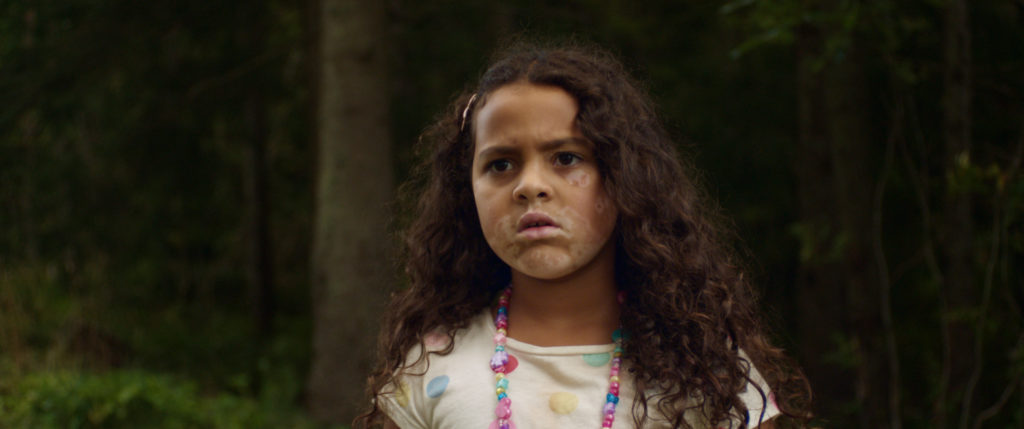
I think you can do a film score from two directions. This means that you can either do them, like what I call “Top-to-Bottom” or “Bottom-Up.” So, top-to-bottom is when you write demos with samples on the computer for the director, they then approve, then you send them to get orchestrated, parts are done, you go record them, mix the whole score, and deliver it. Boom.
But then this film was sort of built the other way. I knew that what we wanted was a real soundscape type of thing where the sound itself was the main factor. There are not a lot of harmonies or melodies in this score so it’s not possible to demo it with any sort of sample. That’s not the music then, right? So I felt that I had to make real recordings right away. So doing bottom-up means that I gather a large bank of sounds for that specific project. Then the score is more or less a collage of those sounds with some additional recordings along the way.
I just had to trust my gut on this and I didn’t even ask for anybody’s permission. I blew a big chunk of the budget very early on to do those string recordings. We had a string orchestra for some sessions and we just recorded textures, chords, and some melodic elements. Quite a lot actually. I then organized them into a library that I then used on this project. So that took months.
My idea was that they could then experiment with my stuff in the edit. And we specifically agreed not to put anybody else’s music in there because that often leads to massive trouble. If you put a Hans Zimmer track in there and then you listen to it every day for four months, like 5,000 times, then that track is the only right track for that movie after a little while. That’s trouble for the composer who then more or less has to replace that track. But it can’t be done because nothing is as good as that. So that’s often what happens with edit music.
It’s called temp love — temp stands for temporary, right? But often the temp becomes permanent if put there. So, we agreed not to use anybody else’s music. That meant that I had to supply them with stuff to play within the edit. A lot of editors love to place some music in there because the pacing of the music also influences the pacing of the film. So all in all, I think I sent them like, five hours of demos. Like, shitloads of demos. I think, 150 different things. It sounds more impressive than it is because it’s just one sound or one idea. It’s then best to do another one in another demo.
But anyway, they were really, really happy that they got to play with all of them. And play with them they did! They placed them on top of each other and tried, “What if we just mash these two together?” And, it was pretty interesting combinations I wouldn’t necessarily have found myself. This made me really realize and learn how much more fruitful and interesting it is when the edit, sound, and music are developed at the same time in the post-production phase.
And then COVID happened. This movie was supposed to be ready for Cannes in 2020, but that whole festival got canceled. So they took some more time and wanted to wait for the next year. So there was even more time to experiment. After the edit was done, I got this massive mess of a session with all my demos. You know, 5,000 of them with little clips from each. I was like, “Shit. What do I do?” But then I started dismantling that session to sort of rebuild everything in a proper way and added things. But, they sort of scored it for me with my demos. It was like, 60% there. Then I made another pass, worked on it for another month or two, and perfected it. That was a process. It took a long time.
That’s so interesting to hear how that extra time was so beneficial for the production. It seems that for some projects, that extra time results in nervousness that becomes detrimental due to too much tinkering.
There’s a point with every project where, even if you had more time, after a certain point, it doesn’t really get better. You just sort of move things from A to B, B to A, A to B. I mean, you can change it forever, but it’s just like, “Okay. This is what it can be. And it has been reached already.”
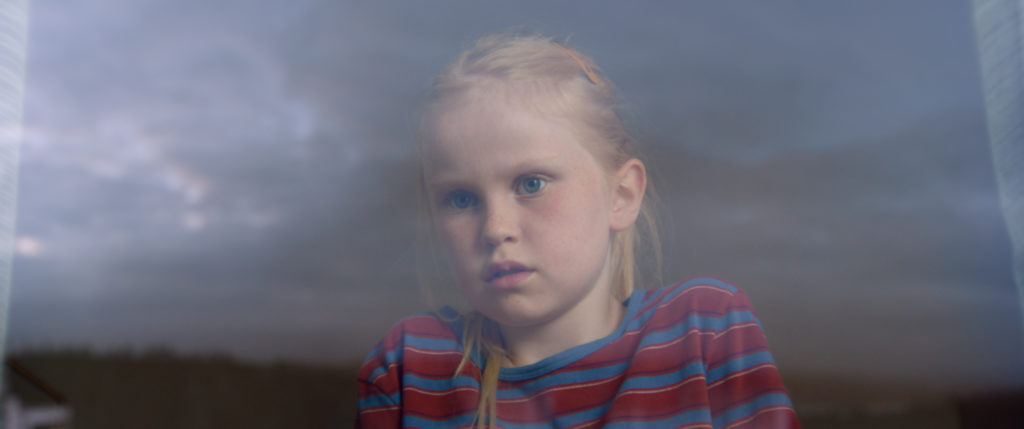
You created a really fascinating YouTube video about the making of this film score and in it, you mention a graphic score you created for the string players. Tell us a little bit more about that. And, in your opinion, how did breaking away from traditional notational constraints benefit the final product?
In the ’60s, it was sort of a phase for graphic scores. So, first of all, what is it? A graphic score means that there are no notes on staves. There were these three plastic sheets and I had painted circles with primary colors on them. One sheet contained some stuff in yellow, the other one in blue, and one in red. I had hand-done I think, 50 of each or however many players were there and just randomly distributed them. So, when they put them together, you can see the primary colors and also the [secondary] colors.
You can see all those and then follow the circle with your eyes. I give you a note or you pick a random note and you follow the circle with your eyes and sort of alter your note corresponding to how the colors make you feel about it. It’s very loose and sort of a hippie-ish way. But the reason I did that was, I can make these textures, but notating stuff like that would take forever. That would be really annoying and hard to read. Improvising the same thing sounds just the same, plus it’s fun.
My personal take is that in contemporary classical music, now somebody will be really mad at me for saying this, but there’s a lot of stuff that is really hard to read and to practice that could be done with improvisation. Not everything of course, but I hear a lot of passages like that where I’m like, “Why did they bother to notate everything?”
I have a background as a jazz musician so my approach to improvising is sort of that I don’t see it as a scary thing. If you put constraints and if you give a clear indication of how to…not like improvising a bebop solo. That requires some in-depth study. But rather, use these two voices. Only use these two notes and alter between them randomly. Anyone can do that. That’s improvising, right?
So anyway, that’s “The Circle.” It allowed me to generate a lot of very useful, semi-chaotic material which would have been a real pain to compose and notate. It can sound totally chaotic, but it can actually sound quite nice if you just tell everyone to play the same pitch, right? If everybody just plays a C, it just sounds like a C which sort of lives in space in an organic, transforming way. It’s quite interesting.
Then what I did with “The Circle” is listen to it quite a lot and then just spliced certain bits out of it which seemed like useful sounds. For instance, there’s this one sound in the score when the kids take the cat and [redacted for spoilers], that sound also comes. And then later, when Ida has the cast on her leg and [redacted for spoilers], we hear that sound from “The Circle” again. It’s a very useful sound, but it’s pitched down. I ran it through physical tape and played it back at half speed. It’s much lower, but it’s just two different notes and has an interesting character.
Plus, when you create something like that and then you take these segments out of it, you’re good. Because you’re like, “Okay. This is the material I’ll use.” Because if you have all the sounds, all the samples at your disposal, and then you’re like, “Okay. Let’s create something.” Well, what’s the first note? You’re narrowing your world when you create a certain amount of material you’ll build the score from. That’s your toolkit. It’s actually much easier to work rather than having everything possible. Because that’s actually quite daunting, isn’t it? Like, if you have to write an article or something and you just stare at the white paper it’s like fffff…well, I can’t say it. [Laughs]
Oh totally. The blank page is always the most intimidating. I’m sure that transfers over into the world of composing as well.
It’s the same. But then you sort of decide, I’ll use these and these and these elements, and suddenly, you have your tools. It’s so much easier actually. I mean, 95% of “The Circle” is not in the film, but that was the whole point. I just located a bit of it that seemed interesting to me, separated them, and then worked with those further. It was sort of like sound design. I’d say the studio was my main instrument in this score. A lot of processing and just mangling and having fun. It’s trial and error stuff. Like, “What if I…?” And then you try it and, “Oh no. That wasn’t too great. But what if…?” And then you try that and, “Oh. This sounds pretty cool. Let’s keep it.”
It’s all in the hunt.
Yeah, you sort of have a hunch. Like, “Okay. If I run this through this, it might sound cool.” But on the other hand, the string sessions we did are very meticulous, composed as if they were a real orchestral score. Everything’s written down and all the violinists have their own parts. It’s not all just chaotic improv. But a lot of these, there’s microtonal chords and weird chords.
I actually calculated…do you know what spectral music is? It was a French modernistic style originating in the ’70s with such composers as Tristan Murail, Gérard Grisey, and a Finnish composer named Kaija Saariaho, who is really well-known and a post-spectralist. It’s involved with analyzing the overtone series of instruments and working with it. So, I used some spectral techniques to create some of those chords. I mean, you don’t really pay attention to that, but that was a way to generate something interesting. And since this is a horror thing, you can be and sound as dissonant as you want, right? In some of the worst places, nothing’s too ugly sounding.
THE INNOCENTS is now available on digital and VOD. And for an inside peek at the creation of the score, make sure to check out this fascinating video on Levanto’s YouTube channel.
- [THE BIG QUESTION] WHAT’S YOUR FAVORITE FEMALE ENSEMBLE IN MOVIES? - July 22, 2016
- [IN THEATERS NOW] THE BOY (2016) - January 24, 2016
- Cult Movie Mania Releases Lucio Fulci Limited Edition VHS Sets - January 5, 2016
Tags: Alva Brynsmo Ramstad, Eskil Vogt, Film, Finland, Interviews, music, Pessi Levanto, Rakel Lenora Fløttum, Stephen King

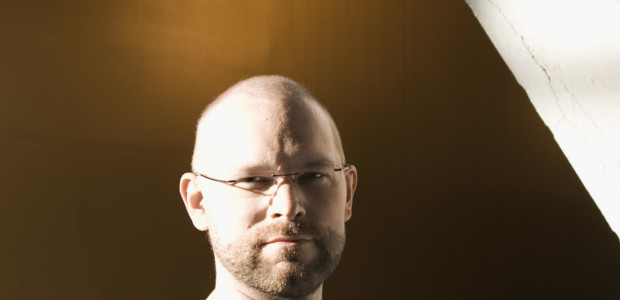
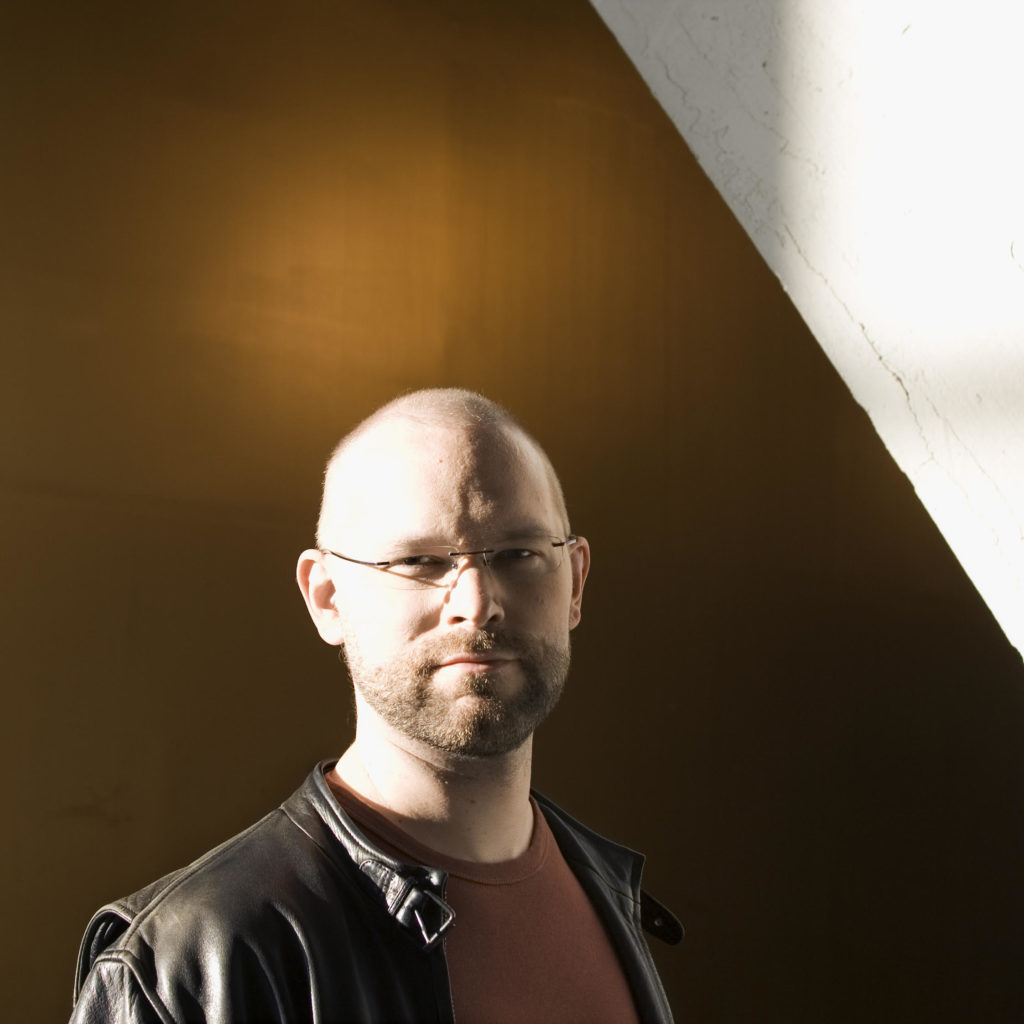
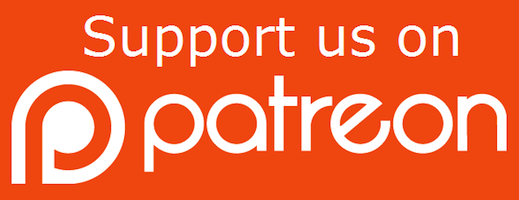




No Comments